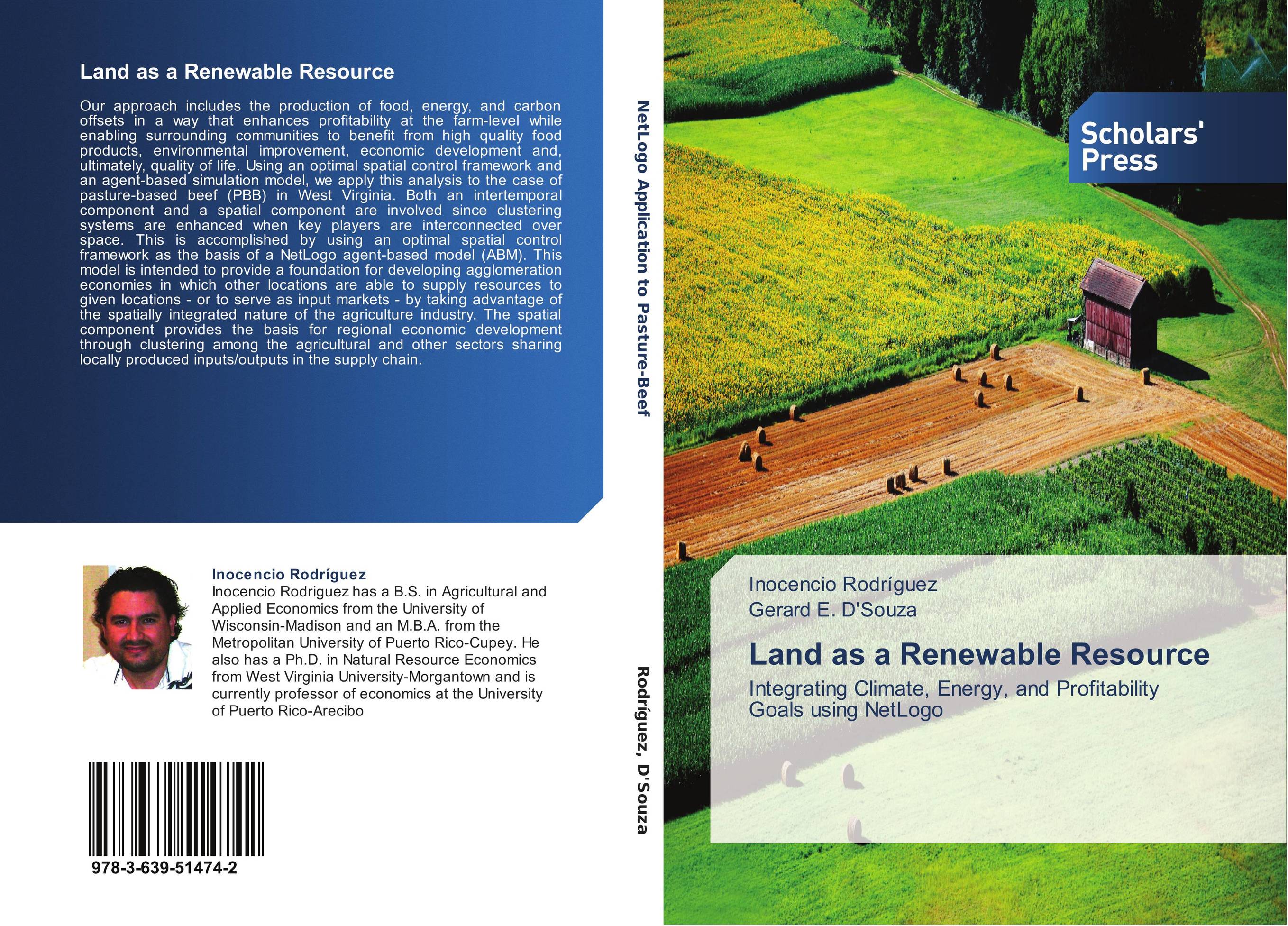| Поиск по каталогу |
|
(строгое соответствие)
|
- Профессиональная
- Научно-популярная
- Художественная
- Публицистика
- Детская
- Искусство
- Хобби, семья, дом
- Спорт
- Путеводители
- Блокноты, тетради, открытки
Land as a Renewable Resource. Integrating Climate, Energy, and Profitability Goals using NetLogo

В наличии
| Местонахождение: Алматы | Состояние экземпляра: новый |

Бумажная
версия
версия
Автор: Inocencio Rodr?guez and Gerard E. D'Souza
ISBN: 9783639514742
Год издания: 2013
Формат книги: 60×90/16 (145×215 мм)
Количество страниц: 164
Издательство: Scholars' Press
Цена: 41357 тг
Положить в корзину
| Способы доставки в город Алматы * комплектация (срок до отгрузки) не более 2 рабочих дней |
| Самовывоз из города Алматы (пункты самовывоза партнёра CDEK) |
| Курьерская доставка CDEK из города Москва |
| Доставка Почтой России из города Москва |
Аннотация: Our approach includes the production of food, energy, and carbon offsets in a way that enhances profitability at the farm-level while enabling surrounding communities to benefit from high quality food products, environmental improvement, economic development and, ultimately, quality of life. Using an optimal spatial control framework and an agent-based simulation model, we apply this analysis to the case of pasture-based beef (PBB) in West Virginia. Both an intertemporal component and a spatial component are involved since clustering systems are enhanced when key players are interconnected over space. This is accomplished by using an optimal spatial control framework as the basis of a NetLogo agent-based model (ABM). This model is intended to provide a foundation for developing agglomeration economies in which other locations are able to supply resources to given locations - or to serve as input markets - by taking advantage of the spatially integrated nature of the agriculture industry. The spatial component provides the basis for regional economic development through clustering among the agricultural and other sectors sharing locally produced inputs/outputs in the supply chain.
Ключевые слова: Multifunctional Land Use; Spatial; Renewable Resources; Climate; Pasture-Based Beef; NetLogo



